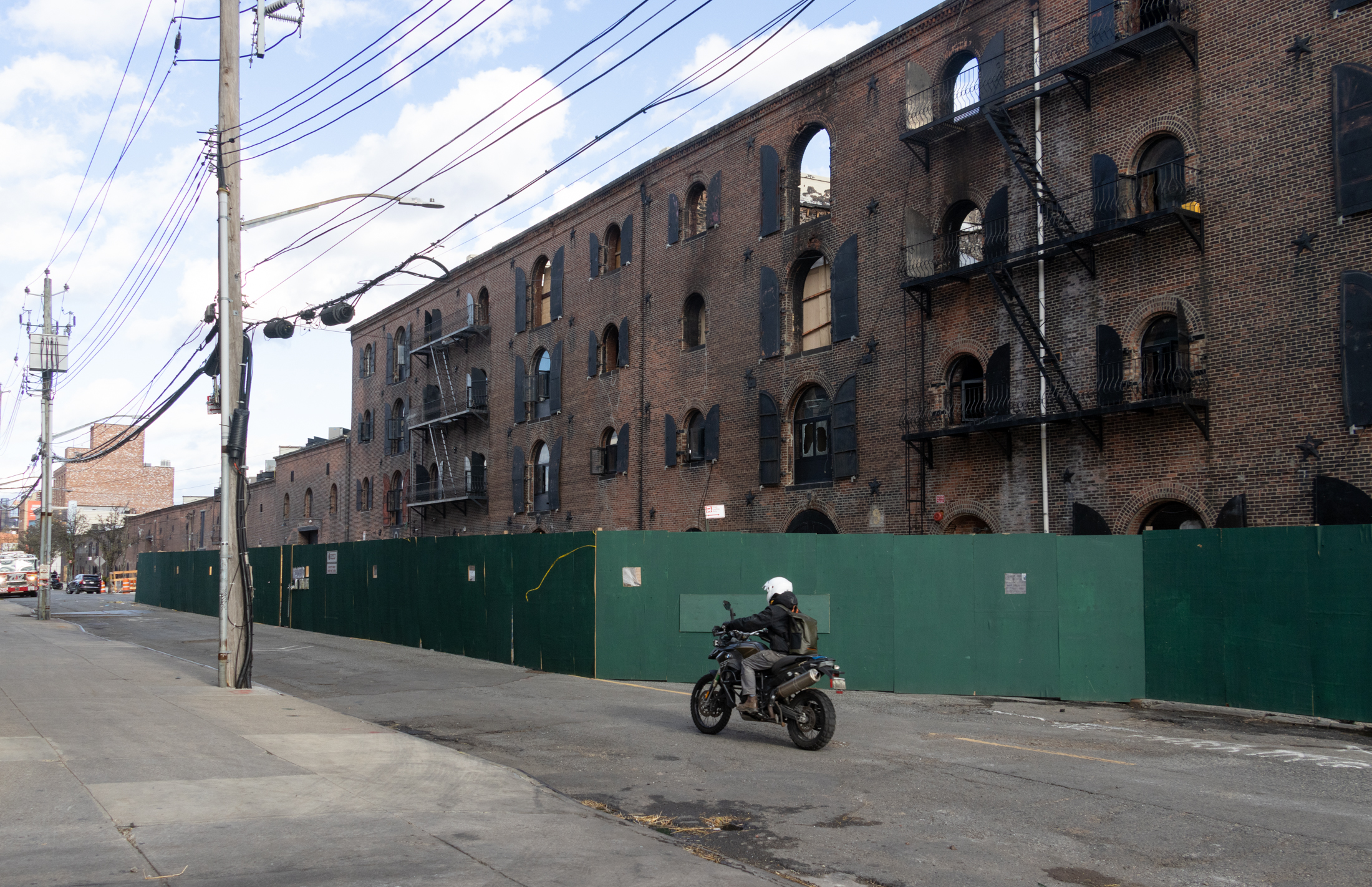Modernism in the City/Gehry in Brooklyn
Charles Taylor’s review in the journal Dissent of From a Cause to a Style: Modernist Architecture’s Encounter with the American City, by Nathan Glazer, is worth a read. Glazer looks at how the ideals of modernism have been usurped by the making of starchitects, whose personal vision for a building outweighs the consideration of the…


Charles Taylor’s review in the journal Dissent of From a Cause to a Style: Modernist Architecture’s Encounter with the American City, by Nathan Glazer, is worth a read. Glazer looks at how the ideals of modernism have been usurped by the making of starchitects, whose personal vision for a building outweighs the consideration of the building’s context or a social agenda. “When architects are regarded chiefly as artists, discussion of their work is reduced to a question of their personal vision,” Taylor writes. “Questions of whether a building serves those who use it or the larger community, of whether it honors or ignores the style and scale of its surroundings, of whether it adds to or damages the life of its neighborhood, are treated as quaintly prosaic and utilitarian, akin to reducing any consideration of a work of art to its social relevance.”
That’s his zoomed out theorizing, which translates this way when talking about Atlantic Yards. “Introducing his design for Atlantic Yards, Gehry spoke about trying to understand ‘the body language of Brooklyn.’ But the only language Gehry has ever been interested in is the language of Frank Gehry. To say he is defiantly noncontextual is to imply that context enters into his thought at all.”
Gehry may have been ousted from the Theater for a New Audience building, but his vision for Atlantic Yards, which, no matter your opinion of it, seems pretty noncontextual considering the neighborhoods around it, remains.
A Wrench in the Machine for Living: Frank Gehry Comes to Brooklyn [Dissent]
Photo from the Atlantic Yards Web site.





The Disney concert hall is a giant cooker- dunderheaded, as the writer called it.
With that kind of decision-making process going on, it’s been increasingly obvious that Gehry no longer separates the needs of his projects from his need to express his own ego. When you think of earlier architects- who certainly had no lack of ego- and their approach, the differences are very apparent. And while earlier architecture may not work well for today, it isn’t because they were not designed well, but more to do with the changes in society. In much older buildings, for instance, they may seem small and cramped because as a whole we are much bigger than people 3-400 years ago. Our lifestyles are vastly different. Whereas a victorian woman might have several outfits and clothing was hung on hooks in cupboards,today we need big closet spaces, as any renovator knows.
Somehow I can’t imagine Gehry worrying about closet space but that’s not to say there isn’t work of his that I don’t like. Some of it I love, like the Rasin Building in the Czech republic, or Bilbao and even the new glass building on the west side. But the AY design- ugh.
the modernist impulse as inherently fascist? true, as far as it goes. modernism was ALWAYS about eliminating things. in the context of atlantic yards, it’s perfectly true that it’s the public that’s been eliminated, and in its place a manufactured public has been paid to declare their support for the project. the design itself reinforces this erasure — the anti-public superblocks, demapping of public streets, and delineation of the the ‘park’ as a ‘publically accessible private space’ — all conspire to privatize, which is to say serve capital, not people, or at least not people without capital.
that this project has been force fed to bklyn certainly isn’t the architect’s fault. it’s the politicos who are supposed to represent us. they failed, and we failed to hold them accountable.
the architect is only responsible for his work, which, in this case, totally reinforces the agenda of private power.
it’s worth noting that the bilbao project was pretty controversial itself among locals. it was demeed out of context and destructive of its architectural surroundings, and was criticized as looking like a shipwreck. there was even an attempted terrorist attack at the museum opening, motivated by charges of cultural imperialism. today, the building is viewed as a great architectural success, even by locals.
AHA! Lurker you’ve done it! Death, War, Famine and Pestilence! Poley is the 4th horseman! I mean What is obviously Death or War – have it your way – then Ozymandius, and then Dow…he could be Famine! And now, Poley for pestilence! Fine work lurker, fine work!
Polemicist, how can you possibly think that an architect (a good one, anyway) does not consider context? That should be about number three on the list, after function and the physical perameters of space.
The fact that Gehry did NOT consider context here is the reason the design fails miserably.
You are so enamoured of your population density theories that you can’t see anything else. There is so much more to building a better city than population density, and the success of a design is predicated on much, much more than whether or not it succeeds in meeting whatever your criteria are on the subject.
An architects job is to build a building that meets the needs of its intended function and contributes something to the surrounding environment. That doesn’t necessarily mean that is has to be “contextual”, but you have to at least consider the context and how the building relates to it in the design. If it’s not contextual there should be a good reason for it and some other way that the building can still work in its surrounding environment. Ghery is not very good at this. I am so bored with his stuff, it is the same old “look how weird and twisty I can be” thing. I hope the building doesn’t get built as shown and am pretty sure it won’t with budget cuts. Let’s just hope we don’t get something worse.
oops- so sorry snarkslope- of course that’s who you were referring to. duh.
I myself am quite taken by the lines “Reading the review more thoroughly, we can see the author is at best uninformed and possibly deranged.” and “The development will not destroy the surrounding neighborhoods, but they will be reborn. ”
Does he mean like at the apocalypse? Would that make poley, Pestilence?
I have serious reservations about Frank Gehry… he strikes be as an architect that creates designs just cuz he can. The asymmetry and twisting just because he can, not because its particularly good, appropriate, pleasing, displeasing.
I have to agree that Bilbao is amazing…
What he has been doing lately is just, frankly, annoying. This is like MIT’s Stata Center. Twisty and colorful and funhousey. Oh, and MIT’s Stata Center is a technical nightmare – thus the lawsuits. This last aspect of Gehry has been a constant in his career….
You know that in 10 or 15 years the old Victorian brownstones and such will just as beautiful as ever and Gehry’s will be a rusting eyesore. People will say ‘what were they thinking’ – there are a lot of buildings and developments like that, left over from the 50’s and the 60’s = they look so out of place. Just a shame they are building it now – think people would have learned